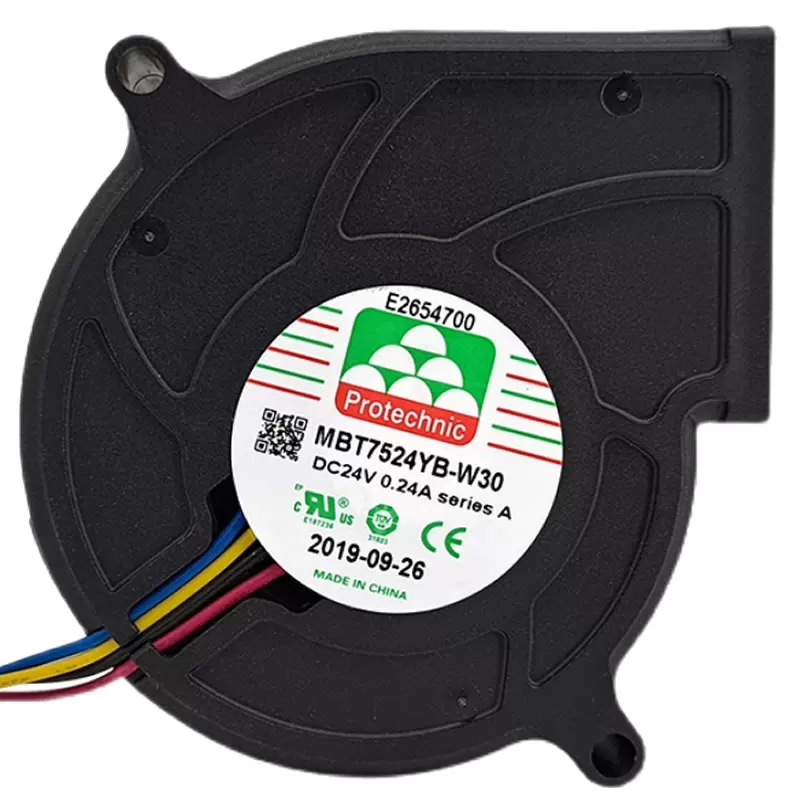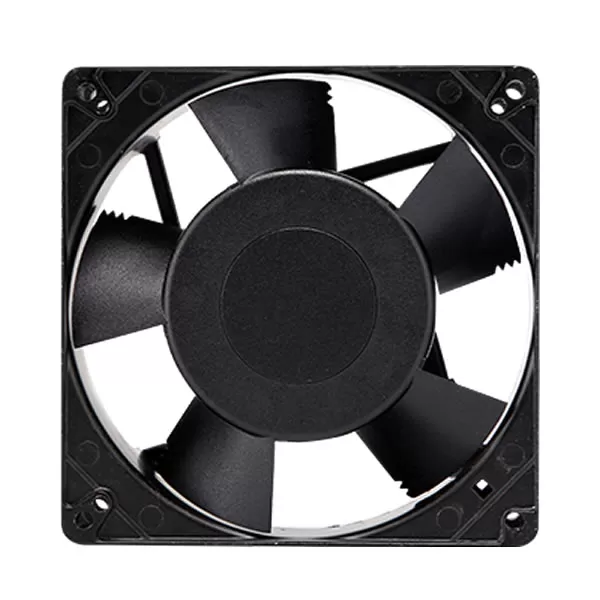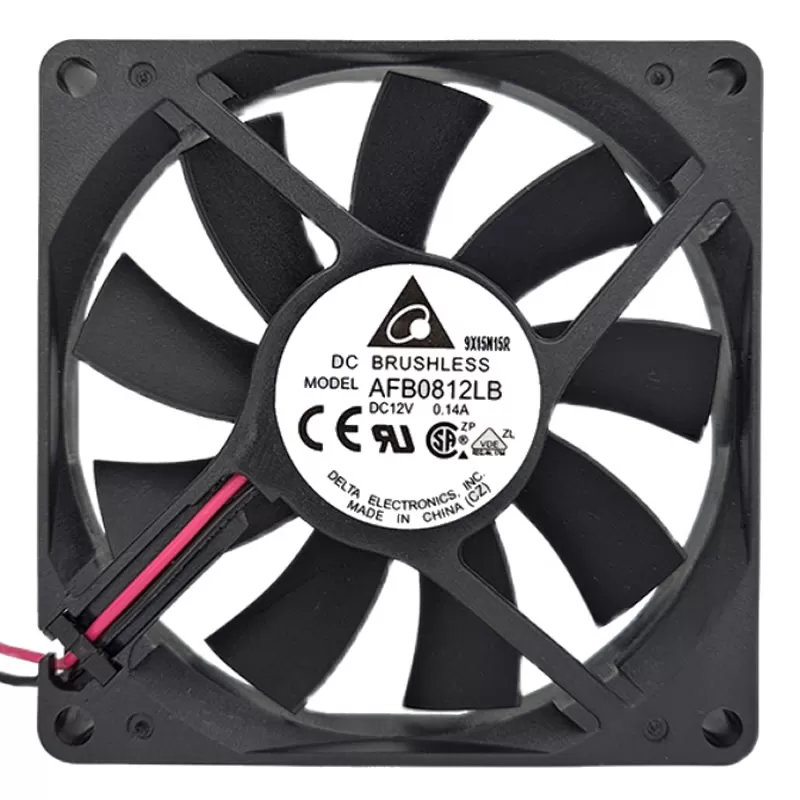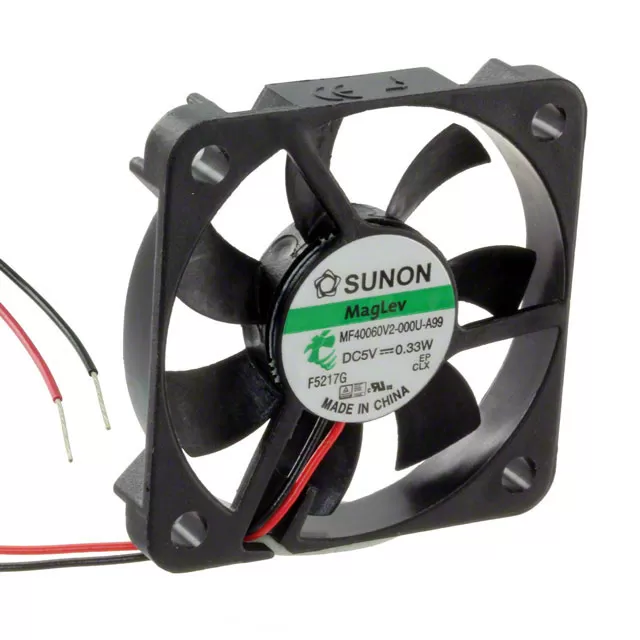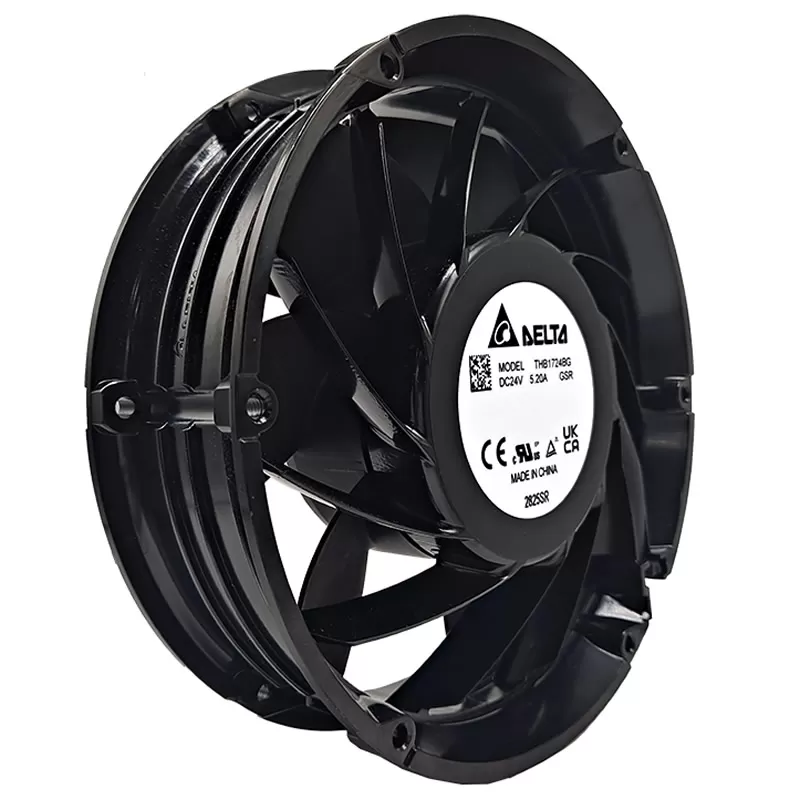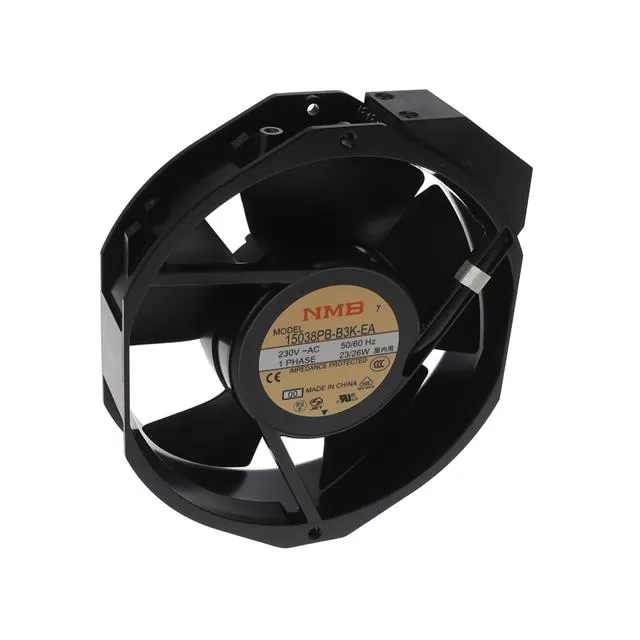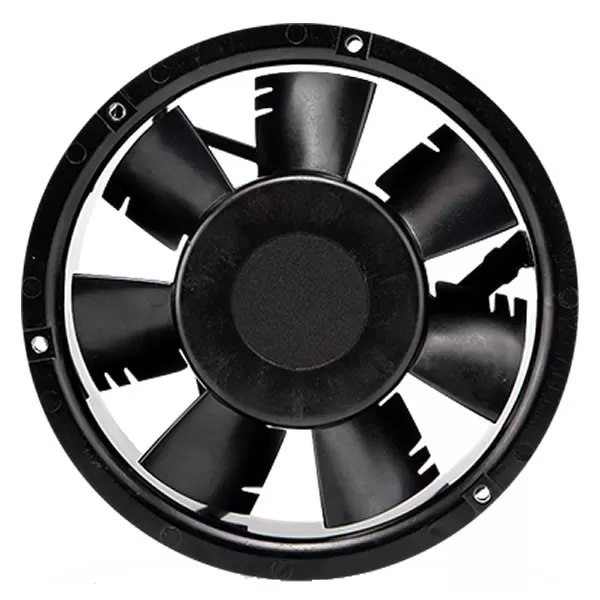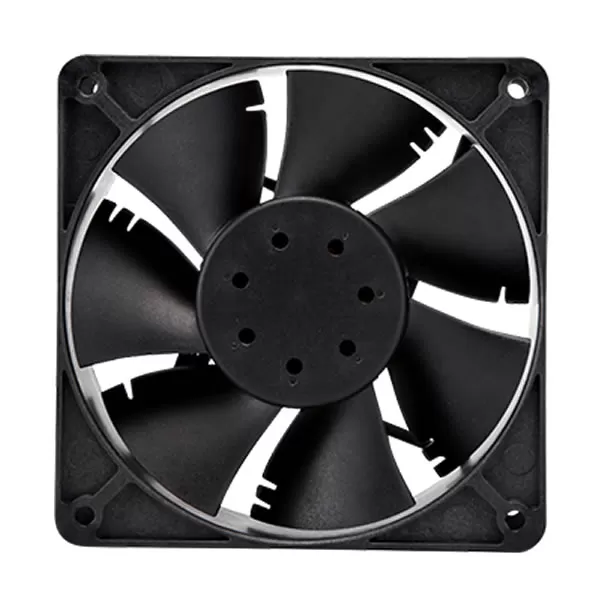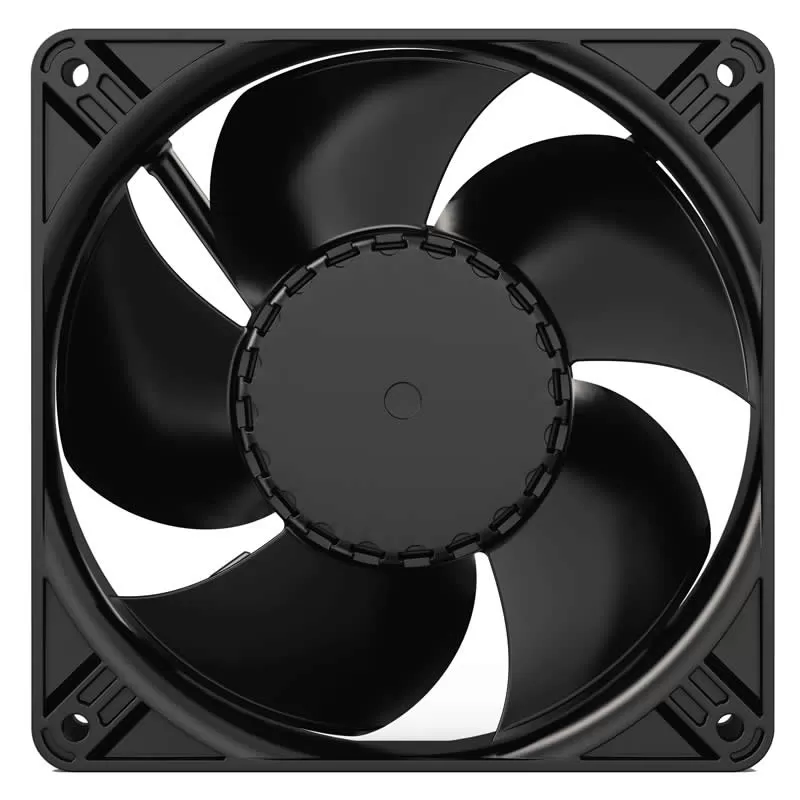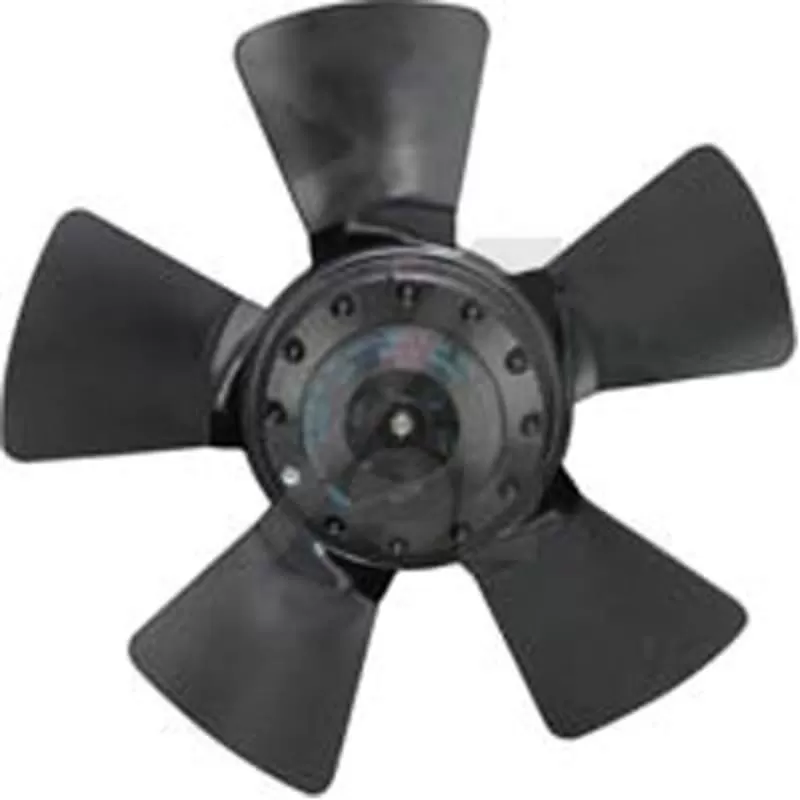A cooling fan is an electronic device that is used to circulate air and remove heat from a machine, system, or room. It typically consists of blades or vanes that rotate to create airflow, a motor that powers the rotation, and a housing that contains the fan. Cooling fans are commonly used in computers, refrigerators, air conditioners, and other devices that generate heat and require cooling to function properly and prevent overheating. They are important for maintaining the temperature and preventing damage to electronic components.
A cooling fan is an essential component in many electronic devices and machines. It is a mechanical device that helps to regulate and lower the temperature of a system by circulating air or a liquid coolant. The primary function of a cooling fan is to dissipate heat generated by the system and maintain it at an optimal operating temperature. This prevents overheating and potential damage to the system, ensuring its efficient functioning.
Cooling fans are commonly used in various equipment, from household appliances to industrial machinery. They come in different shapes, sizes, and designs, depending on their intended use and the system’s cooling requirements. Some fans are small and compact, while others are large and powerful, capable of generating strong airflows. They can be found in computers, refrigerators, air conditioners, automobiles, and even power plants.
The history of cooling fans can be traced back to the 2nd century BCE, where the Chinese invented a manually operated rotary fan to cool themselves during hot weather. However, the modern cooling fan as we know it today has evolved significantly over the years, with advancements in technology and design. The first electric fan was invented by Schuyler Skaats Wheeler in 1882, and since then, it has undergone numerous modifications and improvements.
The basic principle of a cooling fan is to move air across a heat source, absorbing the heat and carrying it away from the system. The fan blades rotate at high speeds, creating a flow of air that passes through the system, carrying the heat away. This process is known as convection, where the heat is transferred from the system to the surrounding air. The heat is then dissipated into the environment, keeping the system cool.
There are various types of cooling fans, each designed for specific applications, and they differ based on their airflow, speed, and pressure. The most common types are axial, centrifugal, and cross-flow fans.
Axial fans are the most basic type of cooling fan, and they are commonly used in electronic devices such as computers and refrigerators. They have a simple design, with blades that rotate around an axis, pushing air in a straight line. These fans are compact, efficient, and generate a high airflow, making them suitable for cooling small systems.
Centrifugal fans, also known as radial or blower fans, have a more complex design compared to axial fans. They consist of a central hub with blades that radiate outwards, creating a vortex that draws air into the fan. The air is then pushed out at a right angle to the axis of rotation, creating a higher pressure and airflow compared to axial fans. Centrifugal fans are commonly used in HVAC systems, power plants, and industrial equipment.
Cross-flow fans, also known as tangential fans, have a unique design where the blades are arranged in a curved shape, resembling a hamster wheel. The air enters the fan from one side and exits from the other, creating a laminar flow. These fans produce a wide and even airflow, making them suitable for cooling large surfaces, such as in air conditioners and refrigerators.
Apart from these common types, there are also specialized cooling fans designed for specific applications. For example, cooling fans used in computers are often equipped with additional features such as LED lights and variable speed control to suit the user’s preferences. In contrast, those used in industrial equipment may have a more rugged design to withstand harsh environments.
Cooling fans also come in various sizes, from small fans that can fit in the palm of your hand to large industrial fans with a diameter of several meters. The size of the fan depends on its intended use and the cooling requirements of the system. Larger fans produce a higher airflow and are suitable for cooling large systems, while smaller fans are more suitable for compact devices.
In addition to their cooling capabilities, some fans also play a role in reducing noise levels in systems. As the fan blades rotate at high speeds, they create vibrations that can produce unwanted noise. To counter this, manufacturers have come up with innovative designs to reduce noise levels, such as using aerodynamic blades and implementing noise-canceling technologies.
Cooling fans are also essential in maintaining the overall health and performance of a system. Heat generated by electronic components can cause malfunctions and reduce their lifespan. By dissipating the heat, cooling fans help to prevent such issues, ensuring the system operates at optimal performance.
Moreover, cooling fans also play a crucial role in energy efficiency. Electronic components tend to consume more power at higher temperatures, making it essential to keep them cool. By maintaining the system’s temperature within the optimal range, cooling fans can help reduce energy consumption and save on electricity costs.
In conclusion, cooling fans are an essential component in various systems, playing a crucial role in maintaining their efficient functioning and prolonging their lifespan. They come in different types, sizes, and designs, each tailored to its specific application. With the continuous advancements in technology, we can expect to see more innovations in cooling fan designs, making
A cooling fan is a device that is designed to circulate air and remove heat from a specific environment or object. It is used in various applications, from personal computers to industrial machinery, to maintain a safe and optimal temperature for operation.
The concept of using fans for cooling dates back to ancient times, where hand-held fans were used to create a breeze and cool down people in hot climates. However, the first electric fan was invented in 1882 by Schuyler Skaats Wheeler. It was a large, slow-moving fan used primarily for ventilation and not specifically for cooling.
Over time, as technology advanced, so did the design and capabilities of cooling fans. Today, there are different types and sizes of fans available, each with its own unique features and benefits.
One of the most common types of cooling fans is the axial fan. It consists of a hub with angled blades that rotate around an axis, pushing air in a straight line. These fans are typically used for general cooling and ventilation purposes, such as in computers, electronics, and household appliances.
Another type of cooling fan is the centrifugal fan, also known as a radial fan. Unlike axial fans, centrifugal fans use a rotating impeller to draw air in and then push it out at a 90-degree angle. This makes them more efficient at moving air in a specific direction, making them ideal for applications where air needs to be directed towards a specific area or object.
In addition to these traditional fans, there are also more specialized fans designed for specific purposes. For example, high-performance fans are used in high-temperature environments or in heavy-duty industrial applications. These fans are typically larger and have more powerful motors to handle the increased workload.
On the other hand, there are also small and compact fans, such as USB fans, which are designed for personal use. These fans are often used to cool down individuals in hot offices or provide a gentle breeze during hot summer days.
Regardless of the type or size, all cooling fans work on the same principle – to move air and dissipate heat. As air flows over a surface, it picks up heat and carries it away, resulting in a cooling effect. This is why fans are commonly used in electronic devices, where excess heat can cause damage or reduce performance.
In addition to cooling down electronic devices, cooling fans also play a crucial role in maintaining safe operating conditions in various industrial settings. For example, in manufacturing plants, cooling fans are used to regulate the temperature of equipment and machinery, preventing overheating and potential breakdowns.
In the automotive industry, cooling fans are an essential component of a car’s cooling system. They help to cool down the engine and prevent it from overheating, which can lead to serious damage. Air conditioning systems in cars also use fans to circulate cool air throughout the vehicle.
In the medical field, cooling fans are used in a wide range of applications, from operating rooms and laboratories to medical equipment and devices. These fans help to maintain a sterile environment and prevent overheating, which can be detrimental to both patients and medical equipment.
Overall, cooling fans play a vital role in maintaining safe and efficient operations in various industries and environments. Without them, our electronic devices, machinery, and even our bodies would be at risk of overheating and malfunctioning.
In conclusion, a cooling fan is a device that moves air to dissipate heat and maintain a safe and optimal temperature. From ancient hand-held fans to modern high-performance fans, the design and capabilities of cooling fans have evolved significantly. In today’s world, they are an essential component in various industries, from electronics and manufacturing to healthcare and transportation. Without cooling fans, the consequences could be dire, making them an indispensable part of our daily lives.

